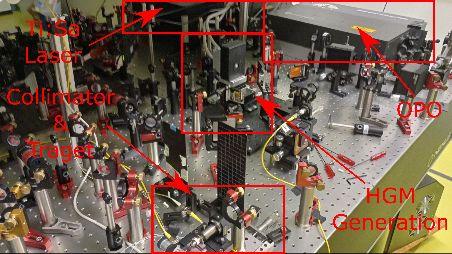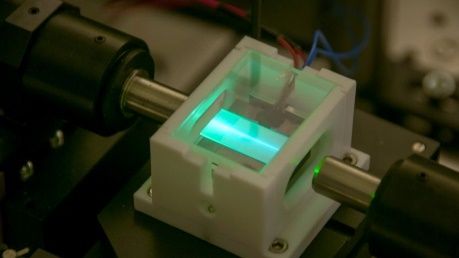Summary
- Profile Type
- Technology offer
- POD Reference
- TODE20230725018
- Term of Validity
- 25 July 2023 - 24 July 2025
- Company's Country
- Germany
- Type of partnership
- Commercial agreement with technical assistance
- Targeted Countries
- All countries
Contact the EEN partner nearest to you for more information.
Find my local partner
General information
- Short Summary
- A German university offers improved distance measurement with radar/lidar sensor through the use of quantum technology. The invention improves radar/lidar systems theoretically up to the resolution limit. Quantum mechanical effects are used here by superimposing several optical signals on a so-called quantum pulse gate (QPG). This leads to significantly improved resolution that exceeds conventional results. License agreements are offered
- Full Description
-
Radio detection and ranging (radar) and light detection and ranging (lidar) are measurement procedures for recording high-resolution environmental and ranging information in real time. The sensor measures the distance with radio waves (radar) or laser light (lidar). The decisive parameters for such sensor systems are range and resolution.
An invention from a German university provides quantum optical support for radar/lidar systems. It uses quantum mechanical effects to exceed the theoretical resolution limits of a classic sensor. The central element is a quantum pulse gate (QPG) in which several optical signals are superimposed. The advantages are that measurement precision is no longer subject to the Rayleigh limit and that the system is much more robust in operation than other quantum sensor systems that use entangled photons.
Areas of application:
Environmental sensors are a key technology for the future: for completely automated driving and other automated processes in industry in such areas as robotics or augmented reality. They are also used in aerospace, geology, and archeology. Robust, high-precision sensor systems are a key to their successful use.
The university can contribute its technology. Industrial licensees from the above sectors are sought. - Advantages and Innovations
-
• Greatly improved resolution
• Robust measurement
• Classic resolution limits can be exceeded - Stage of Development
- Lab tested
- Sustainable Development Goals
- Goal 9: Industry, Innovation and Infrastructure
- IPR status
- IPR applied but not yet granted
- IPR notes
- The invention is available as a laboratory set-up – initial lidar measurements have confirmed the technology’s functionality and advantages. It has been registered with the German Patent and Trade Mark Office. A subsequent application abroad can be submitted in the priority year.
Partner Sought
- Expected Role of a Partner
- The university offers interested companies the opportunity to license and refine the technology in collaboration with the inventors and the university.
- Type and Size of Partner
- Big company
- SME 11-49
- SME 50 - 249
- Type of partnership
- Commercial agreement with technical assistance
Dissemination
- Technology keywords
- 001001014 - Quantum Informatics
- 02009018 - Measurement devices
- Market keywords
- 03007002 - Other measuring devices
- 08002002 - Industrial measurement and sensing equipment
- Targeted countries
- All countries

